Text
3 Places to Learn Maya for Free!
Learning Maya at school can be really exhausting, I really encourage you to learn it again by yourself, and there are some website that offers the learning course for free! Check these out:
1. Pluralsight

Start your 10 day trial for free
2. Lynda.com
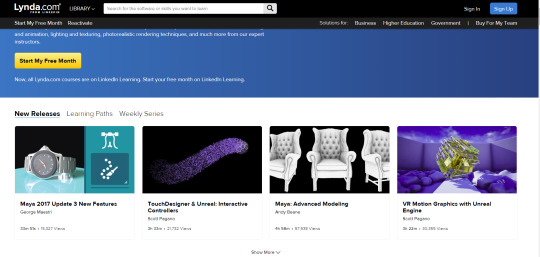
They give us 1 month trial for free!
3. CG Spectrum

Apply now and feel free to learn here for free!
1 note
·
View note
Text
5 Top Places To Get You Hired
Are you having trouble to find job opening opportunities in animation industry?
Here is the 5 top places you can look at to get the job you wanted!
1. First and foremost: Look at your school website!
In every school, they have a job board where employer can post their job opening, and of course because it is from school, they already knew and expect that they will hire student, just like you!

2. The company website! (disney has their own website for job posts)
You have dream of working as their team member? Go head and go to their company website and look for the open position you are interested in!

3. LinkedIn!
Linked in get you in touch with professional, and A LOT of them are hiring. The best thing is you can be specific on what you want to look for: animation industry!

4. Conventions or Conferences (CTN is coming this fall!)
Be active! Go out there and meet people, making connection is the best part, and a lot of conventions/conferences usually have booths where you can show your portfolio to the professionals directly
5. Online Job Board
There are millions of online job boards out here (Glassdoor, Indeed), if you google with location range, and salary range that will help you to get what exactly you wanted.

There are many possibilities to get hired in the industry, but the main point is that you have to believe in yourself, and be active about it. I believe you can!
Good luck!
0 notes
Text
the first small step that they did
Everything has a beginning, there are no exception for big companies that we know nowadays. They all start small, they all start from just like another individuals just like you and me.
I gathered some top history from well known animation studios today, how did they start? How did they come to this moment in life where everyone knows them and like their works?
1. Disney

He went to Hollywood with $40 in his pocket and a completed animated and live-action film. Read more for his magical story creating Walt Disney Studio
2. Warner Brothers

This company starts from 4 Warners boys that has the same passion in the industry, read more to find out they journey
3. Dreamworks Animation

Even though with complicated legacy, here is Dreamworks animation with their story
4. LucasFilm
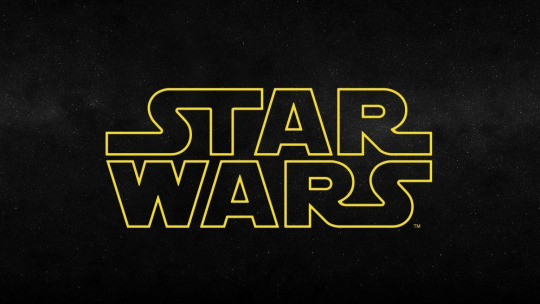
A story of a man with his dream. George Lucas started from San Francisco Bay Area, and here is his story
5. Studio Ghibli

Last but not least, I myself always been curious how company started or even get their name. Here is Hayao Miyazaki and his studio’s journey
(multiple source is linked above)
0 notes
Text
The Semester is Almost Over!
“Summer semester is coming to the end of it! Yay!” -- said no student producer ever.
I am personally very excited to have a break from the semester as a student. Yep, that means no more homework or assignments or tests and quizzes. But the other part of me, as a student producer is screaming out loud: help!
In the beginning of the semester, we producer usually have a few things to figured out, but it is usually the best part: feel excited, feel refreshed after vacation, right? But it is the opposite of the end of a semester. The deadlines are here, meetings after meetings are here, we have to plan for the better future for either next semester, or our next producer (when we graduated).
But it is almost here, and know that you are not alone. Let’s thrive together! I am so proud of my projects that are coming together by the end of this semester.
Check out the poster for new hires that I created!


#prodlife#academyofartuniversity#producer#studentproducer#foodiecats#studiox#newhires#backgroundpainter#textureartist
0 notes
Text
Literally ‘one day at a time’!
There was a story about a kid who get an assignments to do research about all kind of birds in the world. I forgot the exact story, maybe he got punished for something, but he had to finish it. After writing and cutting pictures of birds, he told his dad, “how am I supposed to finished this task? This is too much for me to handle.”
His dad came to him, and said, “Son, do it bird by bird..”
The inspiration of my blog’s title is from a personal experience as a student producer. I have been posting a lot about jobs, salaries and interviews, but I have not professionally tell you about the background of the title!
Besides being a student producer as I mentioned, I am also a full time student, and have part time job on the side. I love people, so I compromise my time to socialize and meeting new people. How do I do it all? They all seem too much to handle for one person. As my mentor always told me, one day at a time!
What is your bird?
Let me tell you about my 2 important morning routines:
When I wake up at 6.30 am, I always go to my phone, check every single email that has been sent to me while I was sleeping. It is important, because an online student might asking an urgent questions that I have to reply right away. I made sure that there are no un-read messages in my email.
Then I checked my SLACK. This is a FREE communication platform that is very useful for any type of professional organizations/companies. They have a chat room for groups and individual, you can set your “work/active” hour, share links, make notes, pin important stuff in your group, and emojis!

(Image from Slack.com)
Slack is available from desktop, so even if my phone is off because I forgot to charge it overnight, when I open my laptop, I set Slack app to open automatically, and give me live notifications.
By checking the most important communication platform every morning, I get to be on top of all my schedule. This is for example, when my artist slack me right from HongKong, that he couldn’t make it to class, I get to prepared to assign his shot for others that are available.
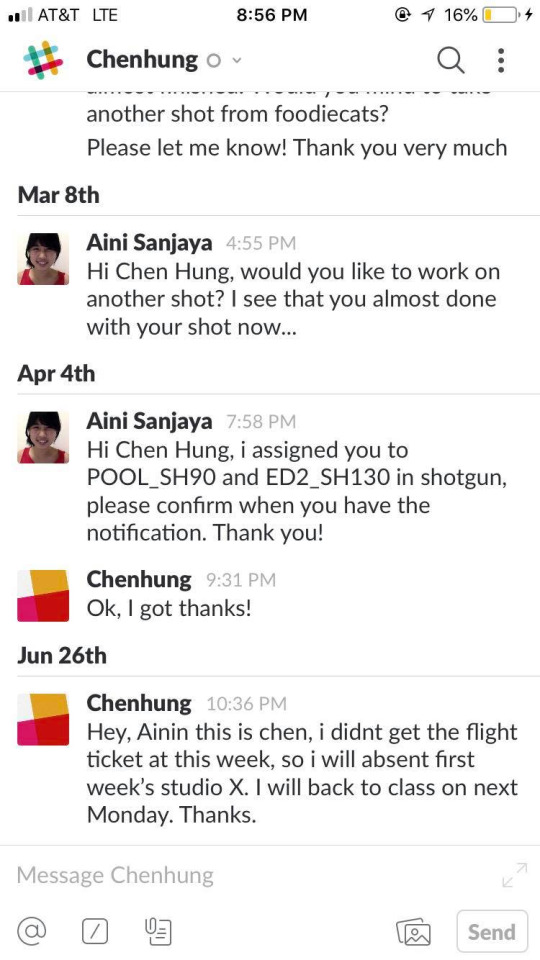
If you are working on a project, and feel overwhelmed, feel free to try on my morning routines, and sign up your workspace in Slack and make yourself available for your teamwork whenever and wherever.
Get slack app here
2 notes
·
View notes
Text
Inside Animation Studio
When I first started animation school, I used to imagine what it would be like to work in a real animation studio, where I thought --still do-- all the magic happens: they created new stories, new characters, new life.. How do they make it happen? What’s inspiring them? Is it fun to work like that?
So here it goes! I compiled some pictures from the studios. It is easy to find any pictures from the outside building of the studio, but it is harder to look for the inside pictures because some of them are not available for public to access. Thanks to all people who I mentioned in these pictures for taking these photos and let the world knows what’s inside the magic!
Enjoy!
0 notes
Text
Planner! You will need Planner!
Have you ever forgot that you have to submit a homework or assignments?? Have you ever missed a meeting with your director because you forgot what day is it?
I want to write about a product that will help you as student to schedule your daily life better.
I use Planner!
I started using Planner book since last year my friend gave it to me: Erin Condren . In the website you can customized your own planner. My friend made one for me because it was my birthday gift, she put my name on the cover, and customized all the inserts.

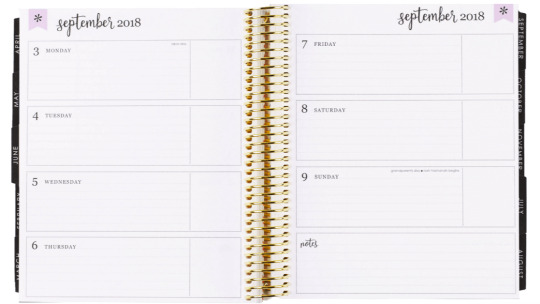
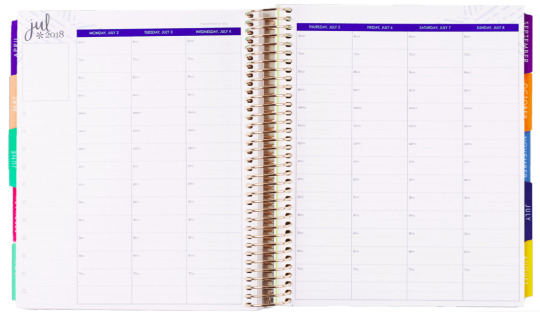

As producers who always go to meetings and packed with all other things in my schedule, this planner help me to be more organized. I have the monthly view where I can put important dates and look for the overall month plan, quickly see which day I am free to have another meeting schedule put into.
I also have the weekly detailed schedule where I can put my hourly schedule.
Nowadays, since planner is a big thing, especially for women, there are also a lot customized stickers that we can add on to the planner, such as things to do, to our water hydration level each day.
I love to write things down, and look back at it, but maybe for some of you it will be a hassle, so I will give you another way to have a planner!
Google calendar! I sync it to my phone and my laptop, easily set my alarm, and quickly type in the event name, and type in the time, it will automatically set up.

I highly recommend this living habit for all student, not only animation industry, not only producers, but all students! This will help you be more organized and less time to forget some stuff that you need to do!
0 notes
Text
4 Most Important Interview Questions for Animators and How to answer them
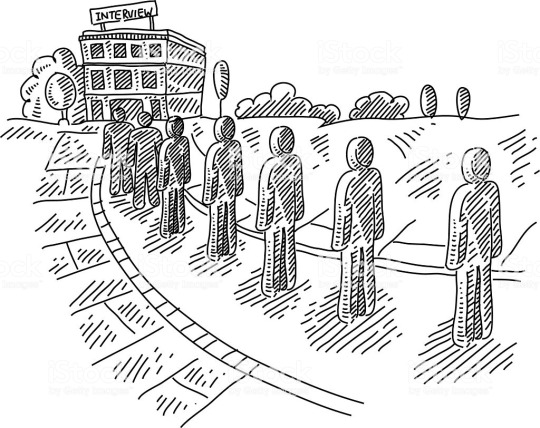
Q: Why Do You Want To Work For This Studio?
The right answer is ultimately has to have the knowledge about the company and show how much research you have done. It is going to come down to your individual situation and preferences, however it’s important to choose the best answer possible. It would be to say that you are respecting the companies’ works – and that you feel your specific skills and expertise, such as A, B and C would be a great fit for the team.
Q: What Has Been The Biggest Challenge Of Your Career So Far?
It’s a good idea to try and choose a challenge that relates to the role you’re being interviewed, since it will show the employer that you’re capable of overcoming the challenges in the industry. You may say “The biggest challenge of my career so far has been A because of B, C and D – and I overcame these by doing E, F and G. I’ve learnt H, I and J from this challenge – and this is now something I apply to my everyday work.”
Q: Why did you chose a career as an animator?
The interviewer wants to hear that you are excited of being an animator for their company. Talk about what interests you about this creative opportunity. Perhaps you enjoy art and technology. You may mentioned that you fell in love with animation at an early age and have considered to do it since then.
Q: What are your career goals as an animator?
Share openly with the interviewer where you'd like to see your job take you. Be sure to include how you feel this particular company would fit in with those specific aspirations. You may say "I enjoy creating animations and want to grow from a freelance animator to a full-time staff animator. I believe your organization would be the perfect fit for me during this transition from freelance since you have supported many other professionals through similar transitions."

0 notes
Text
Resume. How to write one and Why should we do it?
As we talked about how much salary we will get in the industry, we will need find our WAY to get in there. Some of the important things we need to prepare in order to stands out are portfolio and resume.
Your 3D animations work in your portfolio may speak for themselves, but your resume gives you a chance to describe how you acquired your skills and other aspects of your experience that can set you apart from the competition for a position in animation. You may find it helpful to look over a resume sample to see how to include your skills and work history in addition to your portfolio or other presentations of your work.
Generally speaking, formatting and organization are essential components of a successful resume. Your resume should be detailed, informative, and easy to skim.

For a Student or Recent Graduate: Focus on Internships and In-School Achievements
Because some of us do not have work experience, we will have to rely more heavily on our demo reel and portfolio - Resume can be a showcase about other skills. List about your internship experiences, projects you have collaborated with, and other technical and personal skill you possessed. Make sure to list your education before your experience (only for students and new grads), though, and list your GPA if it's above 3.5. If you graduated cum laude or summa cum laude, make sure to include that too.
Always Include a Website Link
You can only fit so much information into your resume and portfolio, especially as you update both over the course of your career, and someone reading your resume might not have easy access to either. They might, however, be able to easily get to your web page, where you can unite all the distinct elements of your experience and skills into a single presentation piece. You can include your resume and add further details that didn't fit on the page; you can expand on your portfolio and online demo reel with additional images and videos beyond what was available in the sample pieces; you can also give them access to interactive works that may not have worked in demo reel format. It's a place to give a little more personal information about yourself, too, but without venturing into the unprofessional; you should keep the same taboos in mind with your website as you do with your demo reel. Overall it should be well-designed, and should create a cohesive image of you as a highly qualified professional.
If you have a strong presence on sites like LinkedIn, you may want to include that link on your resume as well.
Don't Forget Your List of Skills
Depending on whether you're a traditional or computer animator, this may be a list of areas where you have expertise (cel painting, stop motion animation, keyframing, cleanup, etc.) or a list of technical skills and software, (Adobe Photoshop CS5 ,Adobe Flash 5.5, Maya, 3D Studio Max, bump mapping, inverse kinematics, etc.). Most animation jobs require very specific skill sets or software knowledge, and to keep from being passed over you need to be sure that your resume makes it clear that you have experience in these areas.
Use Design Elements and Sample Artwork Sparingly
It is important to keep your resume with simple, elegant designs, for the most part. It will show some professionalism from your personality.
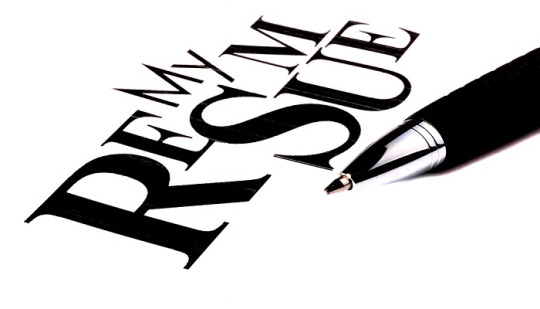
Never Go Over Two Pages
Optimally a student resume should be one page. If you can't fit your experience and skill into one, you're giving too much detail or focusing on things that does not really matter. Make sure they want to be interested into you and want to get to know more about things you have written in your resume.
0 notes
Text
How much do I get paid?
In the last post, we are talking about how many companies, --most of them are the well known companies-- holding back the wages of artists/animators. This idea to write and do research about “how much does animator’s job pay?” because I am pretty sure that if you are a student enrolling in Animation major will have the same question.
I did some research in some website such as Glassdoor, Payscale, Salary1, and Recruiter.com to compare and contrast. I also will talk about the factors that influencing the difference between the numbers especially in California state.

Well, let me start with my own hypothesis based on what I learned from school. After graduating school, we for sure will look for an internship position --hopefully we start looking before the graduation day!--, which basically pays nothing, or at least minimum wage. And in California itself, minimum wage are varies among the location, for example in San Francisco, the minimum wage is currently $14/hr, but compare to LA, Orange county area, the minimum wage is $10.50-$11.00/hr (https://www.dir.ca.gov/). But comparing to other states in the USA, California is still offer the highest paying salary for animators than the other states.
But let’s see how much we actually going to make as a professional animators:
Multimedia artists and animators create animated sequences for video games, television, film, and computers using technology ranging from pen and ink drawing to complex computer modeling programs in their work, and may script, draw and narrate animated sequences under pressure. Their work may also be used in printed materials, slide shows, and multimedia or production campaigns. Professionals in this field generally have at least some college training. From the website Recruiter.com, they mentioned that a multimedia artist or Animator will normally receive average salaries somewhere between $48,000 and $72,000 annually based on education and experience. Multimedia Artists and Animators can receive salaries of $63,800 annually. Multimedia Artists and Animators are paid at the highest level in California. From my other research from Glassdoor, the average salary from Dreamworks Animation is $120,102/yr, Pixar Animation Studio $103,000/yr and ILM $58/hr.
These three companies are from California, and their average salary is already higher than the average of all state salary, which I have mentioned earlier that California is the most high paying animator job.
But I hope that you won’t get discouraged after reading this post, because this is only touching the part of being a 3D animator. There are actually a lot more position and job that you can be a part of after graduating from an animation school. Some of them will be talked later on for the next few posts, but here is some of them:

- Art Director: you can create your own animation, you are the one who looking for fund and gather the team (hiring some talents)
- Stop Motion Artist: this is also similar to 3D animation, only it requires more hands on instead of digital
- 3D modeller: I personally as producer really need modeller in my project, this is a really promising job position because some student who enroll in animation school was not aware of this and becoming animator instead.
- Compositing artist: this is a position in the post production where you get to gather all the shot after it has been worked by the animators.
- Storyboard artist: this is a position where you create the whole concept of the overall animation. Very important role because story board artist are the one who determines the style of the animation.
So there are some of the many job and position that we can think of. If you are new to animation school, you may consider to take some other classes than animation so that you can taste and see your talent which might be helpful for your next career.
0 notes
Text
Animation Workers Set To Receive $170 Million Payout From Wage-Theft Lawsuit
https://www.cartoonbrew.com/artist-rights/animation-workers-set-to-receive-170-million-payout-from-wage-theft-lawsuit-161482.html
I saw this news a few days ago, and I shocked me because of what people's perception of the Animation industry is not sync with the reality. Where people think that people who worked in the animation industry are mostly gained so much money, but in reality what I know is that some of them worked 70-80 hour a week, especially the recent graduates, they have to be an unpaid intern in order to get the position. Even though it is not always be the case, but for most of animator, they worked contract to contract, which means no permanent jobs, means no benefits.

The news is talking about how most animation workers who were employed at The Walt Disney Company/Pixar/Lucasfilm/Imagemovers Digital between 2004 and 2010 did not receive their part of the settlement, and only now they are agree to distribute them to the artists. These are the best DREAM companies that people are want to be a part of, and that must have been great for the animators in this case when they know that they got the job, they signed the contract, yet they had no idea what was coming from their dream company.
In his blog post, “Why You Shouldn’t Want A Job In Animation”, Finn outlined the distinction between a ‘job’ and a ‘career’ in animation:
[T]o me a job is something you depend on from an employer. It’s theirs to give and theirs to take away… A career is something I have to be responsible for based on my reputation, my ability, and my preferences. I don’t expect much beyond what I invoiced for last week, and I keep tabs on whatever’s coming up—staying in touch with long-term contacts and making new ones almost constantly. I try to keep at least one ‘Plan B’ in mind at all times. And that’s fine. A career is like a life: mine to tend, mine to succeed or fail at, mine to take credit and blame for, mine to earn. I would not have it any other way.
In the blog post, Finn recounts his childhood dream of working “cradle to grave” as an animator at Walt Disney Studios—a dream that was comprehensively shattered by the reality of “barely nine months” spent as a 20-year-old at Disney, working on The Fox and the Hound, getting caught up in backstage politics, running afoul of higher-ups, and producing work that was, by his own account, “substandard even for a newbie”.

We as the students pursuing this career and obviously will make a living out this industry, yet I have seen a scandal of animators did not get paid, they did not get credit for their works, or they don’t get enough time to socialize because of the high demands the industry has, and it has been going from the very first strike of Disney animation studio in the early 1930 because of the load of their work.
I am hoping that us as the future of this industry will be wise to pick and choose where do we want our work to be seen at. Be wise in the job searching, and do some research about the company work environment.
0 notes
Text
Career In Animation
Have you seen the current movies in the theater? Most of them are manipulated by animated character or effect. That cool jet travelling through galaxy is actually just a green screen manipulated by graphic interface digitally. And it’s not just children’s movies either.
In such a specialized and competitive field, it’s important to be sure you’ve got the right information before investing your time and energy into pursuing a career in animation. We compiled some need-to-know animation career information for you:
What does animator do?
Animators, also known as multimedia artists, create special effects, animation or other visual images using computers or other electronic tools for products or creations, according to the U.S. Department of Labor (DOL).
As you know, animators are the ones who create television shows, movies and video games. But besides that obvious task, animators have much bigger roles in the industry such as advertisement, education learning system, recreating scene for forensic purpose, and they are everywhere.
Some other examples of animation jobs describe that animators not only do cartoons.
What are some technical skill needed to be an animator?
We see at the most animator job postings from the past year revealed that the top 10 skills employers seek in candidates are:
Adobe Photoshop
Adobe Indesign
Adobe Illustrator
Adobe Acrobat
UX wireframes
Prototyping
User interface (UI) design
JavaScript
MAYA
3D modeling
Is there any related job besides being an animator?
Yes! Here is a sample of a production pipeline. In any project, the final animation has to go through these steps in order to make it a successful animation.

The animators job is the one in the Production. Even then, there are more than just animating the scene. There are layout artist, R&D, Modeling artist, Rigging, Texture and Light artist. Before we step in to the production, there are more to prepare in pre-production line, the idea, concept art, the philosophy and final design. And after the production, there are many other task to do, such as compositing, VFX, editor and distributor.
If you are interested in Animation industry in general, you might want to dig in a little deeper on which specific task you would like to be a part in.
Will I get the job after graduate from college?

Many of us got challenged by this questions and hesitate to pick animation as our career. In fact, there are many other competitive artists and animators who are in the industry already, but based on what we talked about earlier, animation industry is very specific yet really broad, even in our studioX at Academy of Art, we always have stuff for people to do. And this should not be a reason for you to NOT choose animation industry.
Are you up for the challenge?
Bringing dynamic images to life is an exciting job, but a career in animation isn’t exactly a walk in the park. Many animators work long hours, including nights and weekends, to adhere to strict deadlines. But if you’re passionate about animation and determined to succeed, the high-pressure, fast-paced environment shouldn’t faze you one bit.
0 notes
Text
a-i-nimation?
Hello there!
ainimation here is a tumblr blog about Animation industry, running by Aini, an animation student producer, a student in Academy of Art University, San Francisco. I will post some writings about the experience working in as a producer and how it looks like to be in the production line.

If you are a student in animation, modelling, rigging, texture and lighting artist in Academy of Art University, or any animation school in the Bay Area, I will recommend you to keep in touch with this blog, because I will also post some collaboration opportunities from the directors and students that I am currently working with.
The studio we are working in is called Studio-X, which means studio-experience. The goal of this studio is to make the students who are working in them experiencing the real studio production: deadlines, dailies, meetings, and teamwork.
The project I am currently taking care of is Junior Giant Foodiecats directed by the faculty member, and Good, Bad, and Beautiful, directed by a graduate student. The other projects that is currently going are also mostly directed by either graduate student or faculty member.
It has been fun, but mostly challenging to work in the school that has real industry experience. I will be graduating after next fall semester, so I am hoping that this journal will be a guidance for every new producers, and every other students that are interested to join in!

0 notes